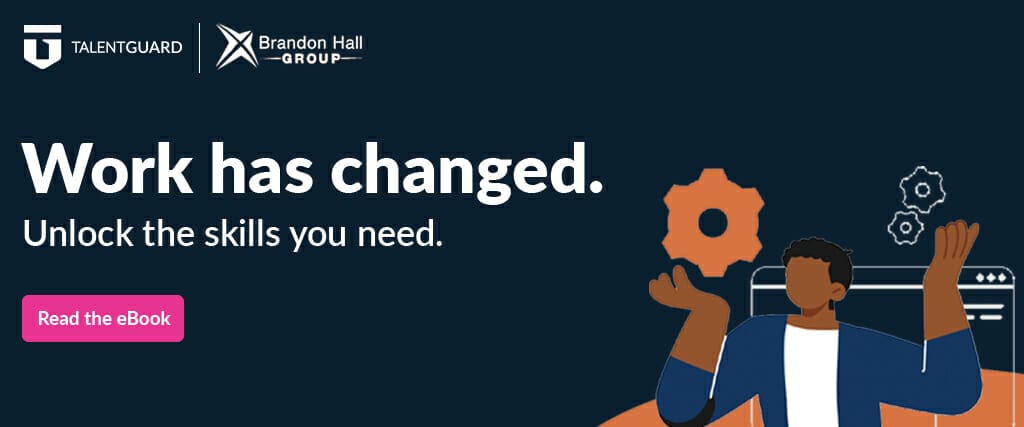7 Best Ways: How Does HR Support Employee Development

Investing in employee development has always been important, but it is becoming increasingly crucial in today’s rapidly changing business environment. As technology connects the world faster than ever, companies are struggling with a growing talent shortage — and racing to find ways to close the gap. Not only are companies hard-pressed to find high-demand skills in the talent market, but research from McKinsey shows that two out of five employees report thinking about leaving their jobs in the next three to six months. One solution to this is to focus on developing the skills of their existing workforce. By providing employees with the training and resources they need to grow and advance in their careers, companies can not only improve productivity and retention but also position themselves for future success. HR plays a crucial role in supporting employee development initiatives, as they are responsible for identifying and addressing the training needs of the workforce. HR can help employees acquire the skills they need to thrive in their roles and contribute to the overall success of the organization. In the long run, investing in employee development benefits both the individual and the company, as it helps to create a culture of continuous learning and growth. Today, we will discuss the importance of investing in development, explore the role HR plays in the growth and advancement of employees, and discuss how they can best support the process.
What is a human resources department?
A human resources (HR) department is a critical function within any organization and is responsible for managing the employee life cycle. You might wonder, what do HR departments do? They are responsible for managing the employee life cycle from recruitment to development. This includes recruiting, hiring, onboarding, training, compensation, benefits, performance management, and more. HR also plays a key role in ensuring compliance with labor laws and fostering a positive work environment. HR acts as a bridge between management and employees, helping align people’s strategies with business goals.
HR does more than handle the daily tasks that keep a company running. It plays a big part in the company’s future company. From planning for future staffing needs to building strong talent pipelines and helping employees grow leadership roles, HR lays the groundwork for long-term success. When done right, it creates a workplace where people and the business can thrive together.
The Importance of Employee Development
Developing employees is crucial for the success of any organization. Investing in employee development leads to increased productivity, improved retention, and a positive company culture. According to Pew Research, a top reason employees stated for leaving their jobs is a lack of career development. Additionally, with the rapid pace of technological change and the increasing demand for new skills, reskilling and upskilling have become essential in the future of work. By providing ongoing opportunities for employees to learn and grow, companies can not only stay competitive but also attract top talent. Investing in employee development is a key factor in driving long-term success.
How can HR support employee development? Here are the top 7 ways
You might wonder, how does HR support employees across different stages of their careers? Let’s explore the top ways HR can make a positive impact. Support from HR is about more than handling benefits and onboarding paperwork. A modern HR team can strategically partner to help employees thrive professionally and personally. Here are seven impactful ways HR can provide meaningful support across the employee journey. Wondering how can HR help employees? Here are the top 7 ways HR can support employees’ growth.
- Employee development and training
Helping employees build new skills—whether through workshops, online courses, certifications, or mentorship—strengthens the team and keeps everyone moving toward the same goals. HR’s role in training and development is essential for equipping employees with the skills needed to drive both immediate and long-term success.
- Employee well-being and health
HR can support employee well-being by offering mental health resources, wellness initiatives, and flexible benefits. Encouraging a healthy work-life balance and promoting self-care significantly reduce burnout and increase overall satisfaction.
- Transparent communication
People appreciate clear, honest communication. HR plays a key role in making that happen and keeping everyone on the same page.
- Career growth and advancement
HR helps open doors through career pathing, internal moves, and succession planning. When people know they have room to grow, they’re much more likely to stay motivated and invested in their future with the company.
- Work-life balance initiatives
Maintaining a healthy work-life balance is essential for long-term performance and morale. HR can introduce policies like remote work options, flexible hours, and paid time off to help employees recharge and stay motivated.
- Diversity, equity, and inclusion (DEI)
HR often leads the charge on DEI, working to build a workplace where everyone feels included and respected. That means fair hiring, regular training, and ensuring different voices are represented throughout the company.
- Employee engagement activities
HR boosts team spirit by running recognition programs and organizing team-building events. When people feel valued and included, they stay motivated and bring their best to their work.
How HR Can Help Support Employee Development
Helping employees grow isn’t just about training sessions; HR’s role runs deeper. It means thinking strategically, spotting leadership potential, and helping people build the skills they’ll need down the road. With HR leading the way, development efforts have a much better shot at real success. It all comes down to focusing on the right priorities.
“HR’s first step is pinpointing the training needs of the workforce. This means running skills assessments, reviewing job performance data, and gathering feedback from employees and managers. With that information, HR can map out the skills employees already have — and where the gaps are. Once the gaps are clear, HR builds personal development plans that set specific goals, resources, and timelines for each employee. To keep growth on track, they also offer support through workshops, online courses, and mentorship opportunities.
In addition to supporting individual employees, HR can also help identify employees with the potential to move into higher roles and provide them with the necessary support and resources to do so. HR creates career growth plans, leads leadership training workshops, and pushes employees to sharpen their skills by working with different teams across the company.
Finally, HR should provide ongoing support and guidance to employees throughout the development process. This may involve helping employees set and track progress toward development goals, providing coaching and feedback, or connecting employees with resources and support when needed. By successfully leading and managing the employee development process, HR can help create a culture of continuous learning and growth.
Maximizing Success with Technology
“That’s where talent management and development software comes in. These tools help HR teams handle important tasks like building development plans, tracking progress, offering feedback and coaching, and keeping employee records organized. By automating much of the busywork around employee development, HR can free up time to focus on bigger, more strategic goals.
With the right software, HR teams move faster, make better decisions, and turn raw data into real insights. Tracking employee growth shows them exactly what’s working and what needs to change so they can keep improving their programs. This allows them to fine-tune development plans to better fit their employees’ needs and make sure every effort has the greatest impact.
Overall, development software is a valuable tool for HR managers who want to support the growth and development of their employees more efficiently and effectively. By streamlining and automating many of the tasks associated with employee development, HR can better support employees as they grow and develop in their careers.
Employee development is critical to achieving long-term success
According to Gallup, organizations that invest in their people are twice as likely to retain top talent and enjoy an 11% increase in profitability. By providing ongoing opportunities for learning and growth, companies can improve productivity, retention, and culture while positioning themselves for future success. By understanding the role of HR in employee development, companies can build stronger strategies for continuous learning and professional growth. HR plays a vital part in driving these initiatives, and when HR and employees work together, they help create a culture of learning that supports both individual success and overall business growth.
Q: How does HR support an employees development?
HR supports employees in many ways, from helping with onboarding and training to ensuring benefits are clear and accessible. They’re also there for performance reviews, career growth plans, and when employees need support or guidance on workplace issues.
Q: What are the seven main functions of HR?
The core functions of HR typically include:
- Recruitment and hiring
- Training and development
- Performance management
- Compensation and benefits
- Employee relations
- Compliance with labor laws
- Building company culture and engagement
These areas help create a well-rounded employee experience and keep the business running smoothly.
Q: How does HR support employee experience?
HR plays a big role in shaping what it’s like to work at a company right from day one. They put policies in place that support employee well-being, celebrate achievements, and make sure everyone feels heard, valued, and included.
Q: How can HR support me?
Whether you’re new to the company or have been with it for years, HR can help with career development, training opportunities, questions about pay or benefits, and even navigating work challenges. Think of them as a resource for growth and support.
Q: What are the three most important HR laws?
While it varies by country, in the U.S., three major HR laws include:
- Title VII of the Civil Rights Act (prohibits workplace discrimination)
- Fair Labor Standards Act (FLSA) (sets minimum wage, overtime, etc.)
- Family and Medical Leave Act (FMLA) (provides eligible employees with job-protected leave)
These laws help protect employee rights and ensure fair treatment at work.
See a preview of TalentGuard’s platform
Top HR Trends to Prepare for in 2026
The last two years have posed specific challenges for those who work in HR, mostly due to the pandemic. Businesses have had to learn how to operate successfully with fewer employees. Positions that were once fully staffed became vacant. Even the way organizations did business drastically shifted. And once the crisis was over, worker shortages […]
Internal Talent Pools: Build a Winning Strategy for 2026
More than ever, a well-executed talent management strategy is considered essential to helping employees and businesses thrive. However, with the world of work experiencing such high-speed changes in recent years, companies must review their processes and account for the increased need to support rapid change. Being best prepared for the future should include adding robust […]
How to Prepare Managers for Upskilling
To meet the challenges of digital transformation, changing market demands, and talent shortages, organizations must prepare managers for upskilling as both leaders and learners. By equipping them with the tools, knowledge, and strategies needed to develop their teams effectively, businesses can foster a culture of continuous learning and innovation, ensuring long-term success in a competitive […]






